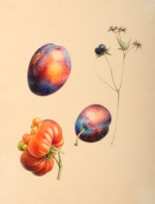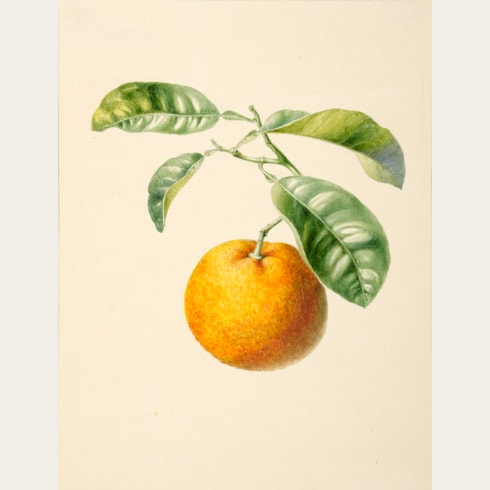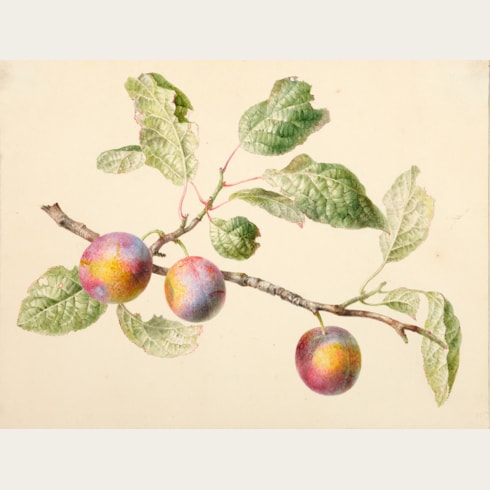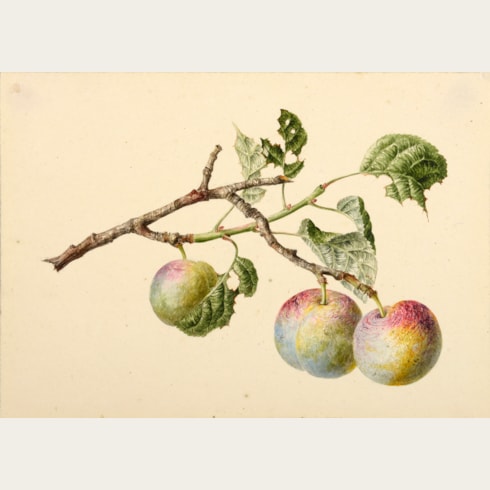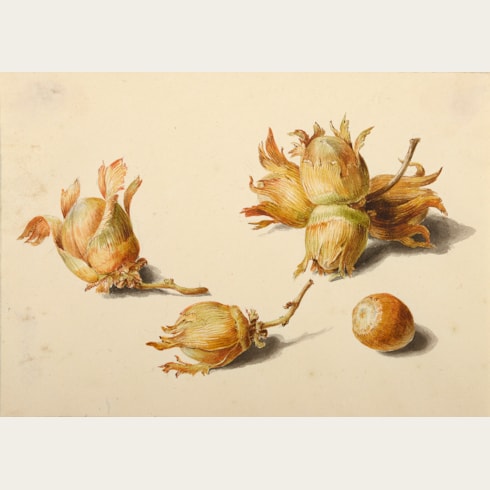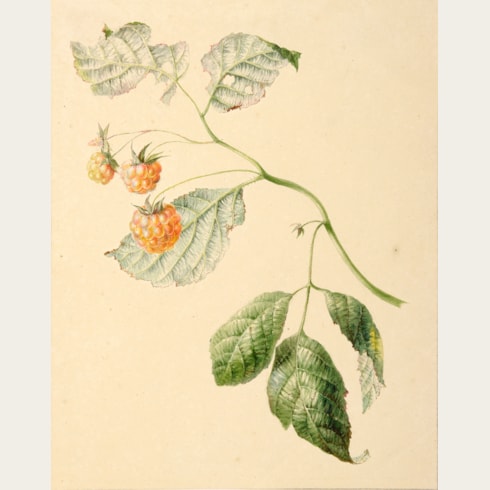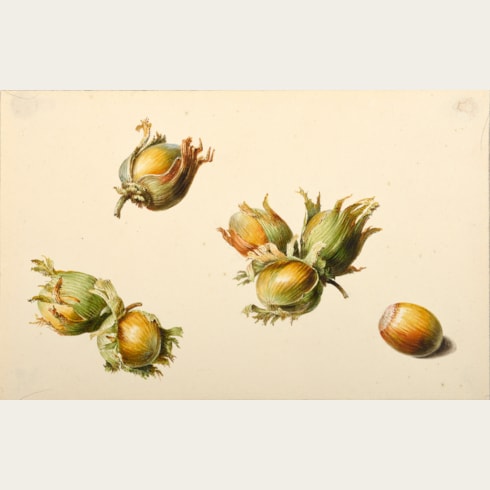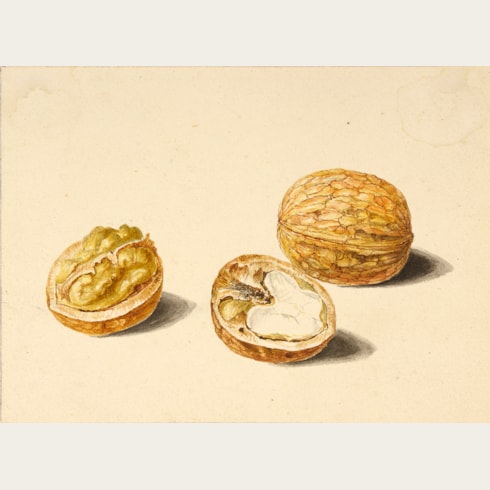Willem HEKKING
(Amsterdam 1796 - Amsterdam 1862)
Two Plums and a Tomato
Sold
Watercolour.
Numbered D / 15-22 and inscribed Prunes d’amour N 57 – S/25 on the verso.
232 x 179 mm. (8 3/4 x 7 in.)
Numbered D / 15-22 and inscribed Prunes d’amour N 57 – S/25 on the verso.
232 x 179 mm. (8 3/4 x 7 in.)
The different fruits depicted in these watercolours by Hekking are very early, almost wild fruit stock, unlike the modern, genetically modified varieties known today.
An inscription on the verso of the present sheet identifies these plums with the French term ‘prunes d’amour’; the term is thought to derive from an apocryphal tale which notes that young men, after courting women at a Sunday dance in the country, would walk them home. When they passed a plum tree, whose fruit was often bitter and difficult to eat unless dried in an oven, the man would offer to eat a freshly-picked plum. If he found it edible, it meant that he was really in love.
Among comparable watercolours by Willem Hekking is a study of Two Plums in the collection of the Teyler Museum in Haarlem.
An inscription on the verso of the present sheet identifies these plums with the French term ‘prunes d’amour’; the term is thought to derive from an apocryphal tale which notes that young men, after courting women at a Sunday dance in the country, would walk them home. When they passed a plum tree, whose fruit was often bitter and difficult to eat unless dried in an oven, the man would offer to eat a freshly-picked plum. If he found it edible, it meant that he was really in love.
Among comparable watercolours by Willem Hekking is a study of Two Plums in the collection of the Teyler Museum in Haarlem.
The son and pupil of the wallpaper painter and landscapist Theodorus Hekking (1766-1819), Willem Hekking also studied with Anthonie van den Bosch. Although he began his career as a painter of wall hangings, he became best known as a watercolour draughtsman and painter, exhibiting highly finished still life subjects of flowers and fruit in Amsterdam and Rotterdam between 1813 and 1838. Among his pupils were Marina Adriana Maria van Toulon and Anna Maria Veeren. His son and pupil, Willem Hekking the Younger (1825-1904) worked as a landscape draughtsman, lithographer and painter in Amsterdam. Watercolours by the elder Hekking are in the collections of the Rijksmuseum in Amsterdam, the Teylers Museum in Haarlem and the Museum Boijmans Van Beuningen in Rotterdam.


